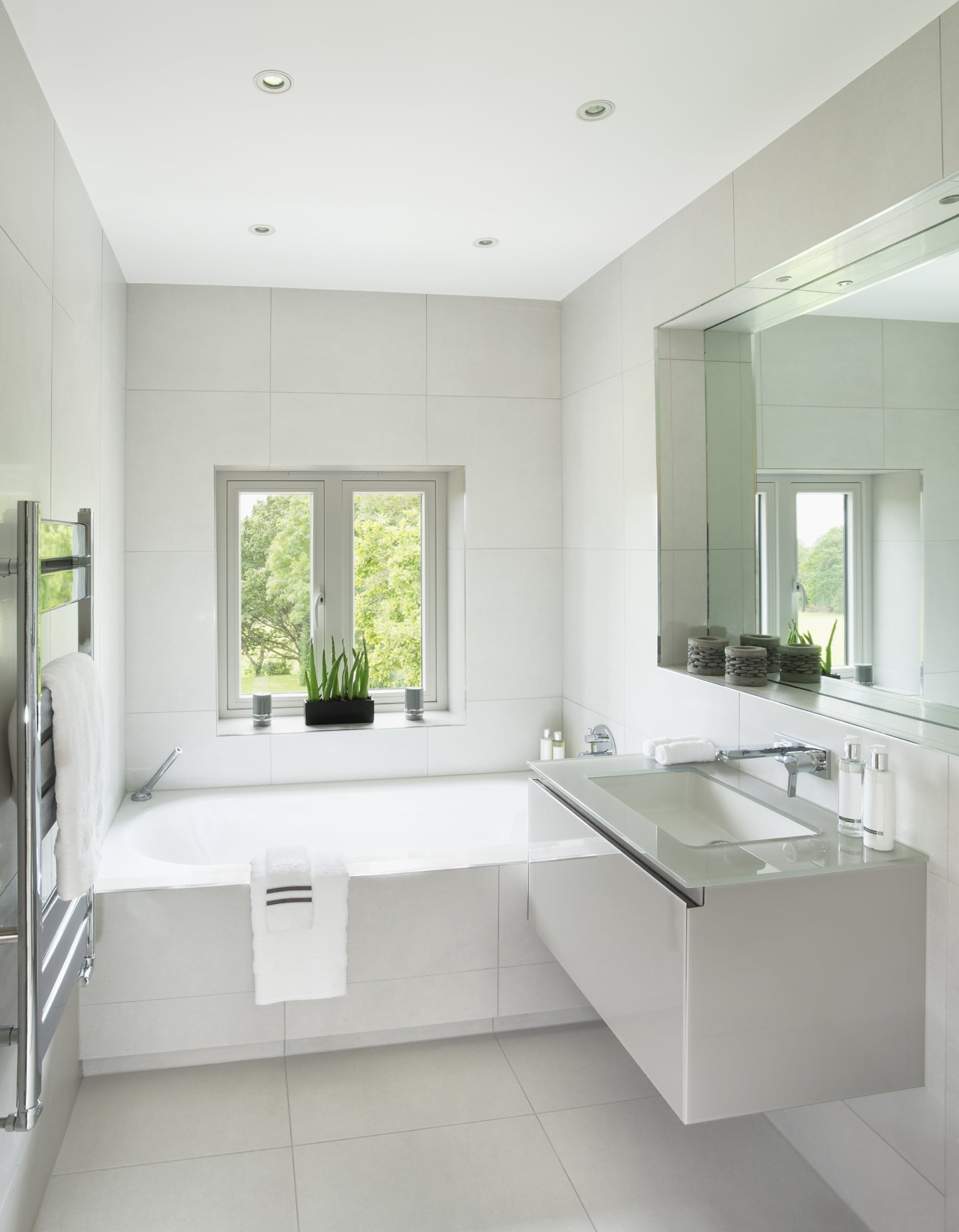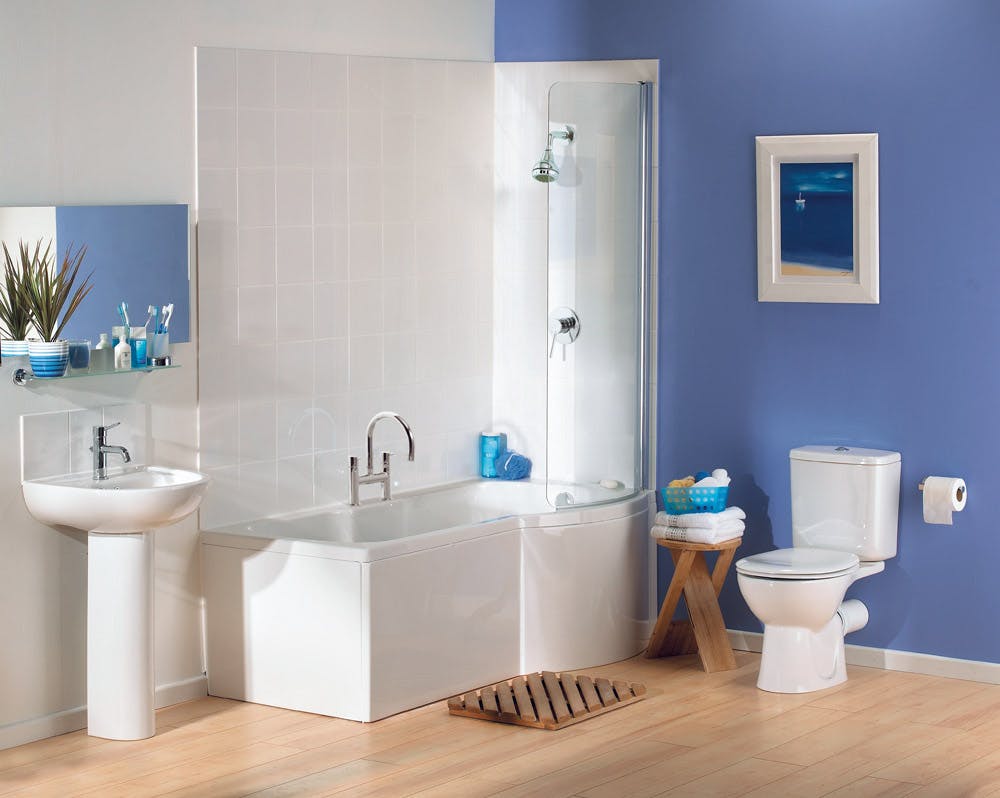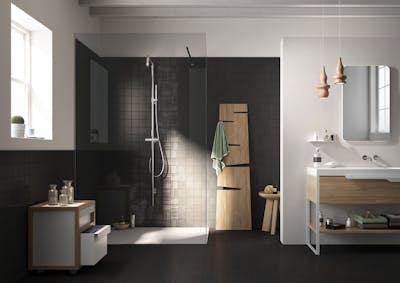Bath Buying Guide | What’s Best For You?
Published: 7 September 2021 · Last Updated: 27 September 2022
A warm soak after a long day can help to reduce stress levels and clear your mind.
But with a wealth of bathing options available, it can often be a confusing task to decide which bath style and size is best for you.
Not wanting you to miss out on the benefits of having a bath, we’re here to help. This article simplifies the different bath options available alongside average bath dimensions.
What Are The Different Types Of Baths?
Just like most items in the bathroom, there are a variety of different types of baths available, with different dimensions and subsequent bathtub capacity. In this article, we have broken down a few different types of baths, their dimensions and offer advise on how much water the average bath holds.
Standard fitted bath
A common bath option, standard fit baths - also known as straight baths - are rectangular in shape and are often made from acrylic.
Fit directly against the wall, standard baths are also often covered with bath panels in a range of materials - adding a contemporary feel to the bath design.
Standard Bath Dimensions
The average bath dimensions for a standard bath are 1700mm
in length and 700mm in width. If you wish to install a bath but have a smaller
bathroom there are smaller standard bath options available from as little as
1200mm x 700mm.

Free Standing baths
Creating a focal point within the bathroom, freestanding baths add a touch of grandeur to your bathroom design and can be placed anywhere within the bathroom (depending on the plumbing).
Available in a range of materials including acrylic, cast iron, and copper, freestanding baths come in a range of designs:
Roll-top baths
With the clue being in the name, roll-top baths have a curved edge at the top of the bath creating a rounded effect. They often sit on chrome feet, making the timeless style perfect for traditional bathrooms.
.jpg?auto=compress%2Cformat&cs=strip&ixlib=php-1.1.0&s=d4d975e796656f62a7bf51d7a2f34b3c)
Boat baths
Available in a range of materials and styles, boat baths have two high symmetrical curved ends that dip in the middle, resembling the shape of an old boat.
Slipper baths
Adding a modern feel to any bathroom, with slipper baths the head of the bath is higher than the foot of the bath, creating a contemporary design. They are also available in a more traditional roll-top design.
Free Standing bath dimensions
Freestanding bath’s stylish designs are often found in the larger size of 1800mm in length and 800mm in width.
However, if you have your heart set on a freestanding bath but have a small bathroom, smaller size dimensions are available.
...png?auto=compress%2Cformat&cs=strip&ixlib=php-1.1.0&s=cc8250fc8e71ee63225c8273e029f4b7)
P and L shaped baths
A great option for family bathrooms, P and L shaped baths provide additional overhead showering space at the top end of the bath.
If you’re not sure which one to choose – L shaped bath’s sleek straight edge design create a contemporary feel, whilst P shaped bath’s curved design offer a smooth relaxing feel.
P and L shaped bath dimensions
Similar to standard bath dimensions, L shaped bath dimensions are 1700mm in length. The width is 750mm in the bathing area and 850mm in the extended shower area. P shaped bath dimensions are also 1700mm x 850mm in the widest area, although both are available in slightly smaller sizes.

Corner baths
Great for smaller bathrooms, corner baths help to save space by directly fitting in between two adjoining bathroom walls. They can also work well in awkward or square-shaped bathrooms.
Corner Bath Dimensions
Available in a range of shapes and sizes, corner bath dimensions vary. Depending on the choice of design, smaller bath sizes start from 1200mm x 1200mm.
Spa Baths
Offering the ultimate relaxation experience, spa and whirlpool baths circulate water around the bath, pumping water through jets to create a massaging effect.
The warm swirling water can also help to relieve joint and muscle pain. If you struggle with mobility you may also wish to consider the installation of an easy access bath.
Spa Bath Dimensions
Available in a range of styles including standard baths, corner baths and P and L shaped baths, spa baths come in a range of dimensions.
How much water does the average bath hold?
You’re probably wondering with all the bathtub sizes we have written about; how much water does the average bathtub hold? We will take the standard bathtub measurements for example and the standard bathtub can hold up to 300 litres of water at full bathtub capacity. However, most people do not fill their baths to the top and use around 170 – 200 litres of water.
Which is best, a steel or acrylic bath?
Alongside bath types and average bath dimensions, we are often asked about which bath material to choose.
Although available in a range of materials including acrylic, steel, natural stone and cast iron (depending on your choice of baths) the most popular are steel and acrylic. Both have several benefits and potential drawbacks that can be seen below.
Acrylic baths
A popular bath material choice and great for busy households, acrylic baths are resilient and easy to clean. They are a cheaper option than steel baths but can be more prone to surface scratches.

Steel baths
Known for being strong and highly durable, steel baths are long-lasting. They often retain more heat than acrylic baths, although the weight of a steel bath requires a strong sturdy base.
To find out more about the types of baths and or how baths can be included in your current space as part of our full bathroom design, supply and installation service, you can call us or book a free design appointment.
Share this Post



.jpg?auto=compress%2Cformat&cs=strip&ixlib=php-1.1.0&s=d4d975e796656f62a7bf51d7a2f34b3c)
.png?auto=compress%2Cformat&cs=strip&ixlib=php-1.1.0&s=cc8250fc8e71ee63225c8273e029f4b7)




.jpg?auto=compress%2Cformat&cs=strip&fit=clip&h=400&ixlib=php-1.1.0&w=400&s=5eeedabe07060d4a519a0b98e2cb700e)

















